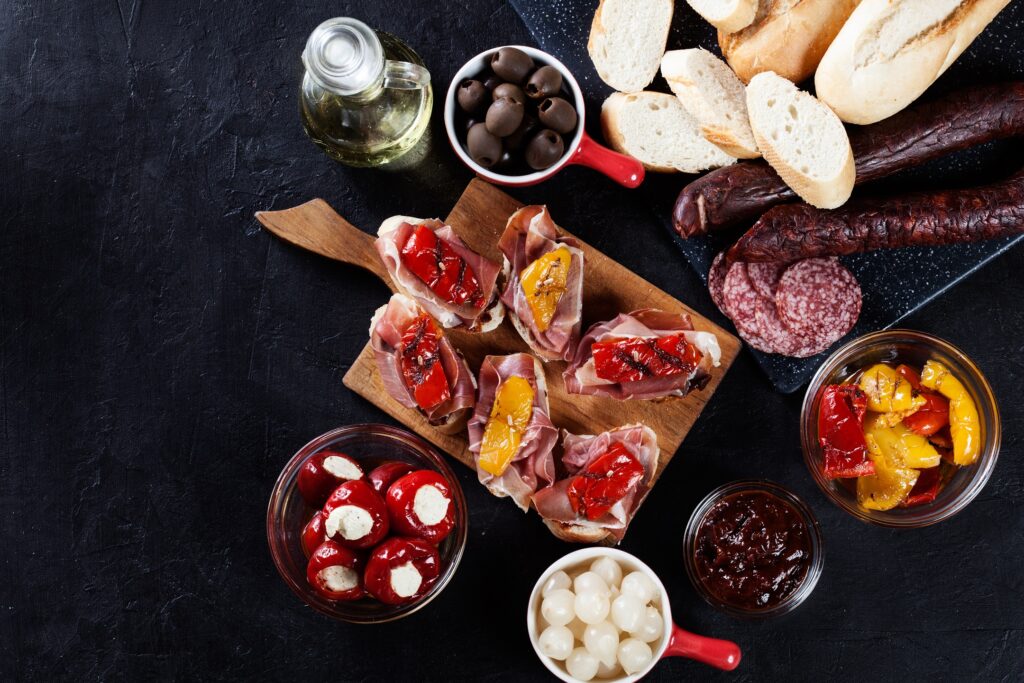Where To Eat in Seville
Introduction
Seville is a vibrant and historic city in southern Spain known for its rich culture and stunning architecture. Here is some more tourist information about Seville:
- History: Seville has a long and storied history stretching over 2,000 years. The Romans founded it in the 1st century BC and later conquered it by the Moors, who ruled the city for over 700 years. During this time, Seville became a major cultural and economic center and was an essential port for trade with the Americas. After the Christian Reconquista in the 13th century, Seville became part of the Kingdom of Castile and was an important center of trade and commerce.

- Cultural attractions: Seville is home to several cultural attractions, including the Cathedral of Seville (the largest Gothic cathedral in the world and a UNESCO World Heritage site), the Alcázar of Seville (a beautiful palace built by the Moors in the 14th century and a UNESCO World Heritage site), and the Plaza de España (a stunning square located in the Maria Luisa Park). Seville is also known for its flamenco dancing, and there are several venues where you can see live performances.

- Food and drink: Seville is known for its delicious cuisine, heavily influenced by the city’s history and location. Popular dishes in Seville include tapas (small plates of food that are typically served with drinks), salmorejo (a cold tomato and bread soup), gazpacho (a cold soup made with tomatoes, cucumbers, and peppers), and fried fish dishes like pescaíto frito (deep-fried small fish). Seville is also known for its excellent seafood, including grilled octopus and squid dishes.
Seville Cuisine
Seville is known for its rich and flavorful cuisine, heavily influenced by the city’s history and location.
The cuisine of Seville, Spain, is heavily influenced by the city’s history and location. Seville is the capital of Andalusia, a region in southern Spain, and the city’s cuisine reflects the various cultural influences that have shaped the area over the years, including Roman, Arabic, and Jewish.
Typical dishes in Seville include tapas (small plates of food that are typically served with drinks), salmorejo (a cold tomato and bread soup), gazpacho (a cold soup made with tomatoes, cucumbers, and peppers), and fried fish dishes like pescaíto frito (deep-fried small fish).
Seville is also known for its excellent seafood, including grilled octopus and squid dishes. Other popular ingredients in Seville’s cuisine include olives, olive oil, and sherry.
Here are some more details about the food, ingredients, and traditions of Seville:
- Ingredients: Seville’s cuisine uses fresh, local ingredients, including vegetables, fruits, seafood, and meats. Popular ingredients in Seville’s cuisine include tomatoes, peppers, eggplants, olives, olive oil, garlic, and sherry. Seville is also known for its excellent seafood, including grilled octopus and squid dishes.
- Traditional dishes: Some traditional dishes in Seville include salmorejo (a cold tomato and bread soup), gazpacho (a cold soup made with tomatoes, cucumbers, and peppers), and fried fish dishes like pescaíto frito (deep-fried small fish). Seville is also known for its tapas, small plates of food typically served with drinks, and are a staple of the city’s dining scene. Popular tapas dishes include patatas bravas (potatoes with a spicy tomato sauce), gambas al ajillo (garlic shrimp), and tortilla española (a potato and onion omelet).

- Food traditions: In Seville, enjoying tapas while out with friends or family is traditional. Tapas bars are popular for people to socialize and sample various small dishes. It is also common for people in Seville to enjoy a siesta (a midday rest or nap) followed by a late dinner, often starting around 9 or 10 pm.
What To Do In Seville?
Seville is a vibrant and historic city with many things to see and do. Here are a few suggestions for things to do in Seville:
- Visit the Cathedral of Seville: This impressive cathedral is the largest Gothic cathedral in the world and a UNESCO World Heritage site. It is home to the tomb of Christopher Columbus and offers guided tours.
- Explore the Alcázar of Seville: The Moors built This beautiful palace in the 14th century, and it is a UNESCO World Heritage site. It is known for its stunning gardens and ornate interiors.
- Stroll through the Barrio de Santa Cruz: This charming neighborhood has narrow streets, colorful houses, and several restaurants and bars.
- Visit the Plaza de España: This stunning square is located in Maria Luisa Park and is known for its beautiful tiled benches and fountains.
- Go to a flamenco show: Seville is known for its flamenco dancing, and there are several venues where you can see live performances.
- Take a boat tour of the Guadalquivir River: This is a great way to see the city from a different perspective and learn about its history.

Best-rated restaurants in Seville
- Abantal: This restaurant serves modern Andalusian cuisine and has received great reviews for its inventive dishes and excellent service.
- Arfe: This restaurant is known for its delicious traditional Spanish food, including tapas and larger plates.
- Eslava: This trendy restaurant serves creative Spanish-inspired dishes and has a beautiful outdoor seating area.
- La Brunilda: This restaurant is known for its excellent seafood, including grilled octopus and tuna tartare dishes.
- Casa Morales: This traditional Spanish restaurant serves classic Andalusian dishes and has a charming outdoor patio.
- El Rinconcillo is the oldest tavern in Seville, founded in 1670. It is known for its traditional Andalusian cuisine and tapas.
- La Azotea: This restaurant has a modern, sophisticated atmosphere and serves creative Spanish-inspired dishes.
- El Faro de Triana: Located in the historic Triana neighborhood, this restaurant is known for its seafood and beautiful outdoor patio.
- Taberna Los Coloniales: This traditional Spanish tavern serves excellent tapas and larger plates and has a cozy, intimate atmosphere.
- Casa Robles: This restaurant has a charming outdoor patio and serves traditional Andalusian cuisine, including dishes like salmorejo (a cold tomato and bread soup) and Iberian ham.
Where to eat in Seville Like a Local?
If you want to eat like a local in Seville, you should try some of the city’s traditional dishes and visit local restaurants and taverns. Here are a few suggestions for where to eat like a local in Seville:
- Tapas bars: Tapas bars are a popular place for locals to socialize and sample various small dishes. Some popular tapas dishes to try include patatas bravas (potatoes with a spicy tomato sauce), gambas al ajillo (garlic shrimp), and tortilla española (a potato and onion omelet).

- Traditional Spanish restaurants: Many restaurants in Seville serve traditional Spanish cuisine, including dishes like salmorejo (a cold tomato and bread soup), gazpacho (a cold soup made with tomatoes, cucumbers, and peppers), and fried fish dishes like pescaíto frito (deep-fried small fish).
- Seafood restaurants: Seville is known for its excellent seafood, and several seafood restaurants in the city are popular with locals. Some dishes to try include grilled octopus and squid.
- Local markets: Another way to eat like a local in Seville is to visit one of the city’s regional markets, such as the Mercado de la Encarnación or the Mercado Lonja del Barranco. These markets are a great place to try local produce, meats, and cheeses.










